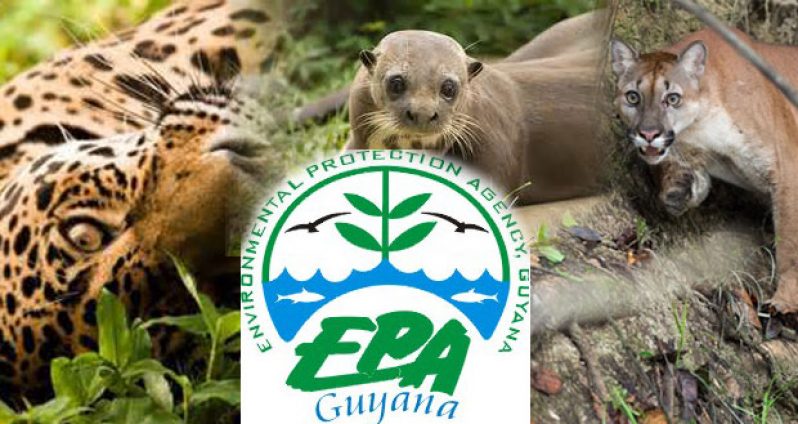On September 16, 1994, the United Nations General Assembly proclaimed that this day will be celebrated as International Day for the Preservation of the Ozone Layer, annually. This was done to commemorate the date of the signing of the Montreal Protocol in 1987. This Protocol was developed under the Vienna Convention, which was adopted in 1985. It is an international treaty designed to protect the ozone layer by phasing out the production of numerous substances that are responsible for destroying the Ozone layer. The Montreal Protocol has so far been successful in meeting some of its targets on phasing out ozone-depleting substances. The theme for this year’s celebration is “30 years of healing the Ozone Together”. This theme is supported by the slogan ‘Ozone: All there is between you and UV’.
What is the Ozone Layer?
The ozone layer or ozone shield refers to a region of Earth’s stratosphere that contains high concentrations of ozone (O3). In simple terms, the ozone layer forms a thin shield high up in the sky. Remarkably, if we could bring the entire ozone layer to sea level, it would only be about 3mm thick. This thin layer of gas is what protects life on Earth by absorbing most of the sun’s ultraviolet (UV) rays.
What will happen if we don’t protect the Ozone Layer?
Due to the misuse of harmful chemicals known as Ozone Depletion Substance (ODS) in our homes and places of work, scientists discovered a ‘hole’ in our ozone layer. This phenomenon became known as Ozone Depletion.
One might think that Ozone Depletion is just damaging to the environment but think again, this can impact our everyday lives. Ozone depletion has allowed harmful UV rays from the sun to penetrate down to earth. Environmentally these UV rays can affect important aquatic and terrestrial eco-systems altering growth, food chains and biochemical cycles. Aquatic life just below the surface of the water which form the basis of the food chain like plankton and algae are adversely affected by the high radiation levels. Plant growth can also be adversely affected which can cause a decline in agriculture production.
Socio-economically these rays can be damaging to human health, causing increases in the incidence of certain types of skin cancers, eye cataracts and weakening of our immune system. Increased penetration of UV results in increased production of ground level ozone, which causes respiratory illnesses.
Increased health costs are the most important direct economic impact of increased UV radiation. The medical expenses for millions of additional cases of skin cancers and eye cataracts pose a challenge to health care systems, particularly in less developed countries like Guyana.
How can we protect this layer?
In Guyana, the National Ozone Action Unit (NOAU) of the Ministry of Agriculture, Hydrometeorological Service is the country’s focal point for the Montreal Protocol which means it is responsible for coordinating and monitoring all activities towards the smooth phase-out of man-made Ozone Depleting Substances (ODS) in Guyana. Through the NOAU, Guyana has been able to maintain compliance with the provisions of the Montreal Protocol. With the assistance of the United Nations Environment Programme (UNEP) and funding through the Multi Lateral Fund (MLF) we have achieved the phasing out of the Chloroflourocarbons (CFCs) in 2008, 2 years in advance of the Protocol’s phase out date of January 2010, in addition to several other Ozone Depleting Substances (ODS) that was due to be phased out, namely, methyl bromide and halogens. The introduction of Regulation to control imports of ODS was passed, which will allow the imposition of a quota system for imports of the Hydrochloroflourocarbons (HCFCs), which is the next ODS targeted for reduction by 97.5% of current average consumption by 2030. This has gone a far way in assisting in global efforts of restoring the ozone layer.
It is important to emphasise, however, that we all have a role to play when it comes to protection and preservation of the Earth’s Ozone Layer. Having policies is not enough, this is a job that requires a collective effort by all citizens of the Earth. It requires a change in our attitude and everyday practice.
Ozone-depleting substances are still present in many older types of equipment and appliances so awareness of how to deal with these is crucial. Here are some practical things we can do to help protect the ozone layer:
Make sure that old refrigerators and air conditioners are disposed of safely by giving them to a recycling yard. Take care not to damage the cooling circuit which contains the ODS;
Ensure technicians repairing your refrigerator or air conditioner recover and recycle the old ODS so they are not released into the atmosphere;
When renovating your house, make sure that old insulation foams containing ODS are disposed of as environmentally hazardous waste;
Inform yourself about ozone depletion through further reading, and suggest activities at your children’s school to increase awareness of the problem and initiate local action.
Let’s pledge to restore the Ozone Layer!
Sources:
http://ozone.unep.org/en/treaties-and-decisions
http://www.hydromet.gov.gy/ozone.html
http://ozone.unep.org/en/30th-anniversary-vienna-convention-and-international-ozone-day-2015
Share your ideas and questions by sending letters to: “Our Earth, Our Environment”, C/O EIT Division, Environmental Protection Agency, Ganges Street, Sophia, GEORGETOWN, or email us at: eit.epaguyana@gmail.com.
Ozone: All there is between you and UV
SHARE THIS ARTICLE :
Facebook
Twitter
WhatsApp




.jpg)










